
views
Using a Towel or Blanket

Protect yourself from bites and scratches. Wear long sleeves to prevent your cat from breaking through your skin. Thicker fabrics like a hoodie, sweatshirt, or flannel will protect you better. Even with long sleeves you may still get bites or scratches. Bites and scratches may hurt even if they don’t break the skin.

Secure the cat into one room. Start by closing the doors to empty rooms so that your cat has fewer options for escape. It’s best to be as calm as possible as you close the doors so that the cat doesn’t pick up on what you are doing. Try to corral your cat into a room with less furniture or items that are easy to move. If your cat is currently calm but will become upset as you try to administer its medicine, see if the cat will let you pick it up and carry it into a small room with few places to hide. You can shut the door and use that room as a secured location. This method should only be used with cats that know you and are uninjured.

Remove places to hide. Put smaller items like chairs and side tables out in the hall or in a closet. Close the closet door, and block off the space leading under larger furniture to the best of your ability. You may not be able to block off a bed, but you should be able to prevent your cat from getting under dressers, nightstands, or entertainment centers.

Get a heavy towel or blanket. Your towel should be long enough to fully encase the cat but not so long that you may fumble with it as you try to wrap it around the cat. A large bath towel is a great option. Using a heavier towel will help you control the cat better because it weighs the cat down when you put the towel over it, plus the towel’s thickness will prevent scratching.
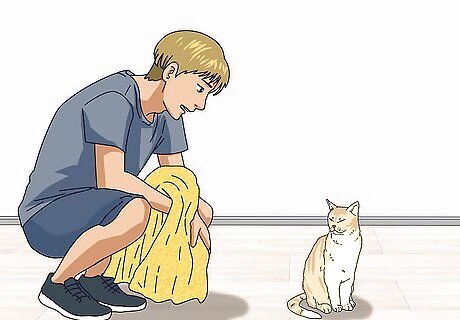
Talk to the cat. Before you try to catch it, sit near your cat and speak in a calm voice to show your cat that you aren’t a threat. Try to minimize the stress in the situation, which should help calm your kitty.
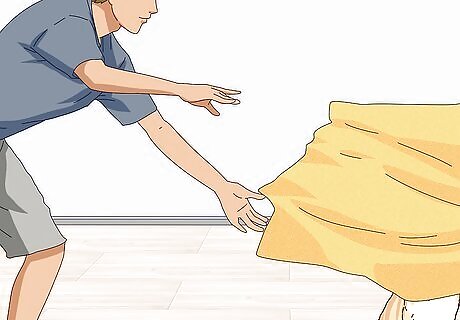
Throw the towel or blanket over your cat. Once your cat calms down or walks into an open position, cover it with the blanket and scoop it into your arms. Move quickly because cats have fast reflexes and can easily out-maneuver a slow human.
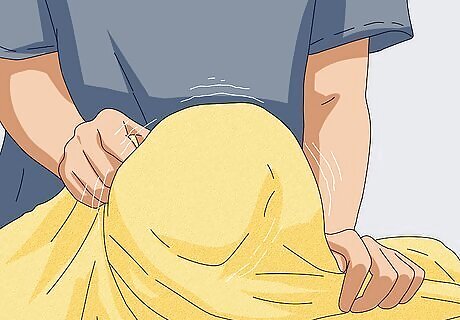
Wrap your cat in the blanket. Make a cat burrito by sliding one end of your towel or blanket under the cat and then securing with the other end. Your cat will likely squirm and cry, but don’t let it go. This is a normal reaction, and letting go will only make it harder for you to capture your cat a second time.
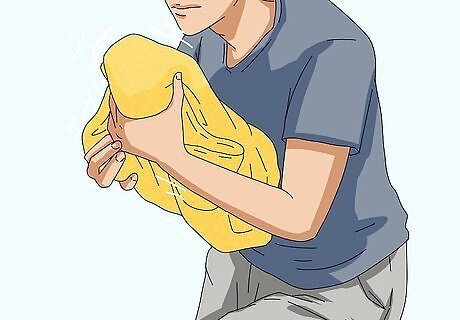
Hold your cat against your body. The cat will calm down more quickly if it’s pressed against the warmth of your body, plus you will be able to maintain a better grasp as it tries to wiggle free.

Free your cat’s head. Your cat needs to be able to breathe, and keeping it’s head free will also lower its anxiety. If you need to give it medicine, you will need access to its mouth and throat. Put the medicine in the cat’s mouth, hold the mouth shut, and rub the cat’s throat to help the medicine go down.

Don’t let go once you have a grasp on it. If you get your hands on the cat, it’s better to hold on even if the cat has the upper hand. If it gets away, catching it again will be nearly impossible because it knows what you’re trying to do. Release the cat from the blanket as soon as possible.

Find other ways to give medication to your cat. If you are trying to catch the cat so that you can give it an oral medication, you might try hiding the pill in food, such as a cat of tuna. If this does not work, contact your vet. Let them know how difficult it is to give the medicine to your cat. Depending on your cat's prescription, they may be able to inject the medication at their office or give you a topical gel.
Getting a Cat Into a Pet Carrier

Get the cat used to the pet carrier. If you know that you will need to load your cat into a pet carrier in the near future, put the carrier out where the cat can see and explore it. Not only will the cat get used to the carrier, but it might go in on its own to check it out. Give your cat treats for going in the carrier, or leave food and treats inside for your cat to find. Once your cat starts to go inside the pet carrier, close the door for a few minutes. When you open it again, give your cat treats and pets to reward it for getting into the carrier. When your cat starts entering the carrier on its own, carry your pet around for a few minutes to get them used to it. If you don’t have time to get your cat used to the pet carrier, set the carrier in one of your cat’s favorite spots and put fragrant food like tuna fish inside the pet carrier to make it interesting to the cat.
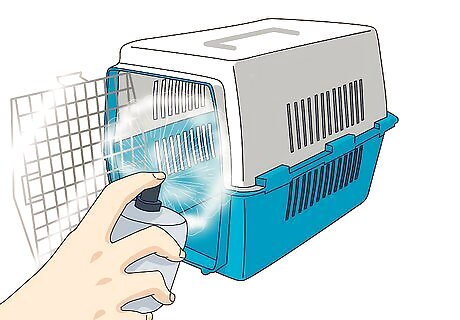
Use cat pheromones. You can buy pheromones that have a calming effect on cats. Spray the pheromones on your pet carrier to help lower your cat’s anxiety. You could use the pheromones while you’re getting the cat used to the carrier and on the day you need to travel with the cat.
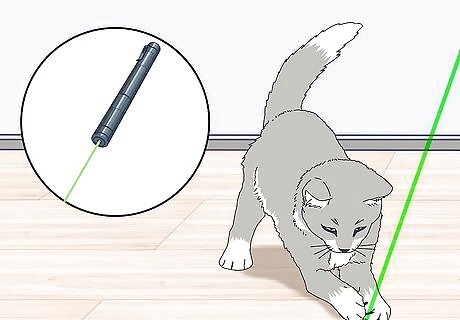
Use a laser pointer. Get your cat to chase the red dot into its pet carrier. Spend a few moments playing with the cat first, allowing it to get focused on catching the dot. The cat will forget about the carrier and run right into it. This works best if your cat enjoys playing with a laser pointer. You will have more success with a larger crate or a crate with a top opening, as it could be difficult for you to land the dot inside a small case.
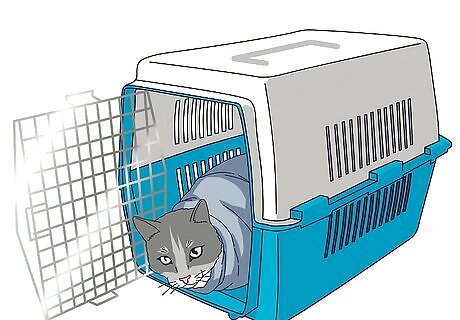
Make a cat burrito. If your cat is still reluctant, then you will need to first wrap it up in a towel. Prepare your carrier by opening the door and placing it on a stable surface near your cat. Follow the instructions for using a towel or a blanket in the method above. Once your cat is wrapped like a burrito, slide the cat into the pet carrier tail first. Try to loosen the towel once the cat is in the carrier, but don’t let it escape because it will be much harder to catch a second time. If your cat is really upset, close the door of the carrier and allow it to calm down for a moment before loosening the towel. The cat may be able to get out of the towel without any assistance.
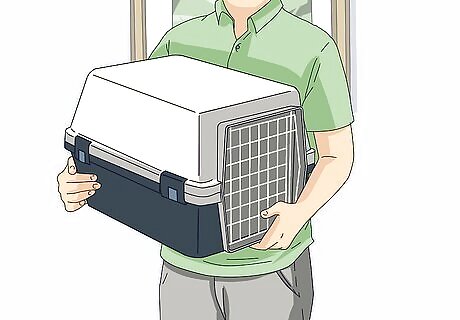
Carry your pet carrier against your chest. You cat’s experience inside the carrier will be better if you hold the carrier against your chest than if you swing it at your side. Keeping your kitty happy while it’s in the carrier will make it easier to catch it next time. When you’re carrying the pet carrier, cover it so that your cat can’t see the world flashing by. Remove the cover while the carrier is stationary.
Trapping a Feral Cat

Feed the cat. Feral cats are usually hungry, so putting out food can make even the wildest cats lower their defenses. Before you can trap the cat, you’ll need to get it used to coming to your trapping spot. Put out food in the same place and at the same time each day so that the cat visits regularly. If there are more than one cat, make sure that there is enough food so that they don’t fight. You will also want to provide water so that the cat won’t be dehydrated.

Train the cat to enter a trap using food. Place your trap in the feeding location. Start by placing the food outside of the trap and slowly move the food into the trap. Continue until the food is in the back of the cage with the cat willingly getting in to eat it. Give the cat a week or two of feedings to get used to the trap so that it won’t be afraid of it. Prop the door of the trap open so that the cat can move in and out freely. One trap option is a trip-plate trap. In a trip-plate trap, the open door is triggered shut by a mechanism connected to the food plate. These traps eliminate the need for the trapper to have good timing because the trigger shuts the door. Drop traps are commonly used to trap cats. These traditional traps include a box held up by a stick that the trapper will pull out from a distance. Drop traps are a good option if the cat has learned how to avoid triggering a trip-plate trap. Stick to the same time and place schedule as before. Watch the trap while it’s out to make sure that cats don’t get accidentally trapped or harmed.
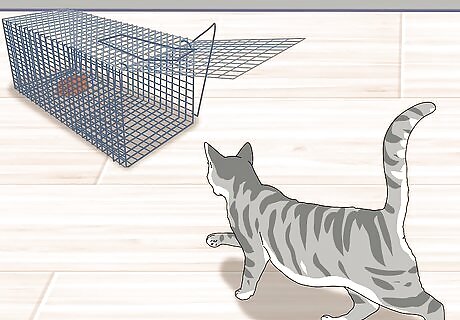
Set the trap. Once the cat is used to entering the trap to eat, set the trigger plate so that the door will shut once the cat is inside.
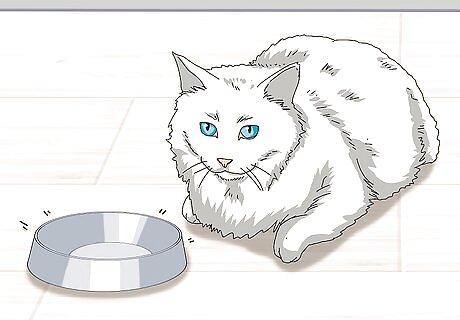
Stop feeding the cat so that it’s hungry. If you’re still having trouble catching the cat, you can wait a day or two between feedings so that the cat is more likely to be hungry. After the two day withdrawal period, place a trap with food inside in the normal feeding spot. Most cats will go into the trap to get the food. Continue to give the cat water while you’re withdrawing food so that the cat won’t dehydrate and will keep coming to the feeding spot. If the cat still doesn’t go in the trap, try a more enticing entrée, such as real chicken or tuna fish. You can also try disguising the trap in a bush.












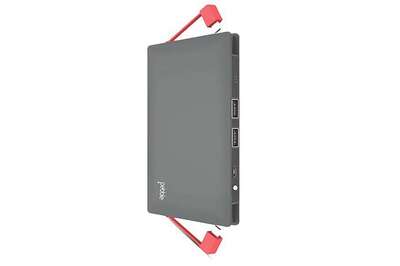






Comments
0 comment